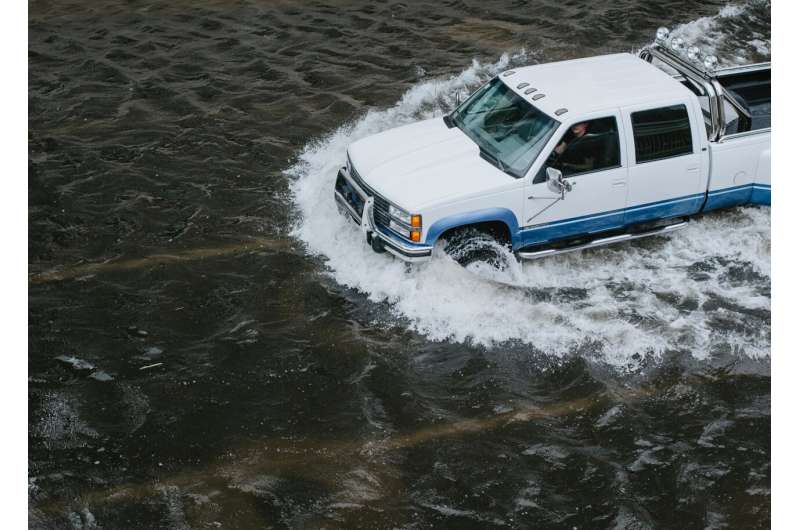Enhancing levee inspections with advanced technology

Sadie Harley
scientific editor

Andrew Zinin
lead editor

In the United States, earthen levees are an integral part of flood control systems, protecting around 23 million Americans and crucial infrastructure. Recently, the rated the nation's levees a D+, with an estimated $70 billion needed for maintenance to bring them into a state of good repair.
According to the , nearly two-thirds of the 24,000 miles of levees in the U.S. have not been properly assessed for risks and defects such as cracks and erosion. These risks increase the likelihood of catastrophic flooding and cause extensive economic damage.
A project called Automated and Robotic Inspection of Flood Control Systems (ARIS), sponsored by the U.S. Army Engineer Research and Development Center aims to improve inspection technologies for monitoring and assessing the health of earthen flood control structures, such as levees and culverts.
The Texas A&M University-based research is led by principal investigators Dr. Jason O'Kane, professor of computer science and engineering, and Dr. Anand Puppala, A.P. and Florence Wiley Chair professor of civil and environmental engineering and director of the Center for Infrastructure Renewal (CIR).
The project includes a multidisciplinary team of co-principal investigators (co-PIs): Dr. Navid Jafari, Dr. Nasir Gharaibeh and Dr. Wenping Wang of Texas A&M; Dr. Surya Congress of Michigan State University; Dr. Doug Edmonds and Dr. Lantao Liu of Indiana University Bloomington; Dr. Thomas Oommen of the University of Mississippi; Dr. Atlas Wang of the University of Texas at Austin; and Dr. Lydia Kavraki of Rice University.
With combined expertise in civil infrastructure engineering, computer science, remote sensing and robotics, and AI/ML studies, the team aims to develop reliable and rapid levee inspection processes.
Their research focuses on exploring the potential of land-based, aerial (drone), and satellite-based technologies for inspections, with a portion of the research conducted at the CIR on the Texas A&M University RELLIS Campus, leveraging its state-of-the-art facilities and resources.
Dr. Puppala's research group at CIR—including Dr. Puneet Bhaskar, Dr. Vinay Lakshminarayanan, and Ph.D. students—is conducting levee inspections using remote sensing technologies deployed on aerial platforms that capture optical and thermal imagery, as well as satellite-based systems such as Synthetic Aperture Radar (SAR) and multispectral imaging.
They are also conducting AI/ML modeling studies on culverts. This multisource data is being used to develop inspection models for levee systems, with the goal of detecting potential defects such as cracking, erosion, vegetation encroachment, settlement and seepage. Remote sensing observations are validated through on-site inspections to ensure accuracy.
A calibrated test site at the Texas A&M RELLIS Campus—a 270-meter-long, 6-meter-high berm featuring varying slopes and engineered artificial defects—serves as a controlled environment for evaluating and refining these technologies. Additionally, the team is exploring methods to identify operational and maintenance-related defects in culverts located beneath levees.
Jafari and his research group are focused on combining Street View imagery and mobile light detection and ranging (LiDAR) scans to improve efficiency and increase the frequency of levee inspections. Traditionally, uncrewed aerial vehicles are used for these surveys, but the team suggests that using a system with 360-degree imagery from a Street View camera and a LiDAR scanner mounted on a vehicle will provide clearer images and reduce the need for repeated surveys.
Additionally, Jafari's team is developing a machine learning model to identify potential problems and defects in levees. This system aims to detect critical issues and hazards, ensuring public safety and increasing the resiliency of these vital pieces of infrastructure.
With their innovative approaches, the ARIS research team is working toward a safer future for communities across the nation by transforming the levee inspection process to better protect against flooding.
Provided by Texas A&M University



















